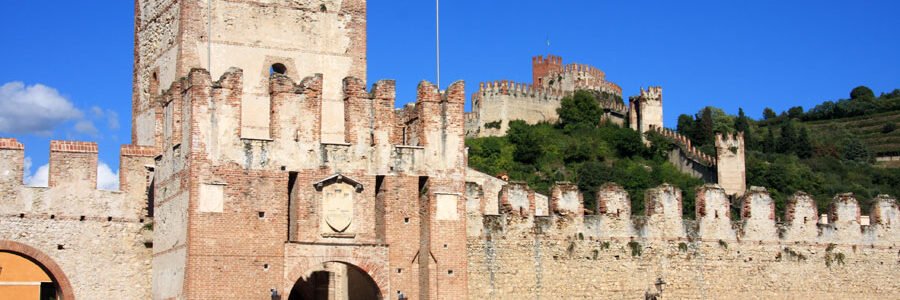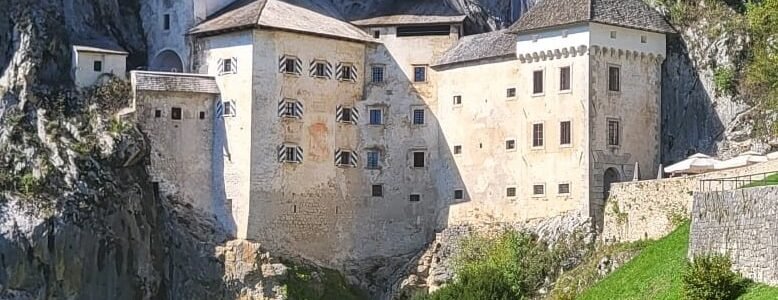From Coast to Canal: A Journey Between Trieste and Venice
It starts quietly. Just outside Trieste, the road rises gently and the sea falls away behind you. The sky opens, olive groves shimmer in soft gold, and the hum of the Adriatic fades into inland stillness. You pass through towns that seem paused in time. Nothing shouts here — the journey unfolds like a slow breath. Trieste and Venice might share a coastline, but their energy, their posture toward the world, could not be more different.
Two Cities, Two Ways of Seeing
Trieste stands with a kind of silent confidence. Its facades — faded yet firm — speak of empire, exile, and books left half-read in cafés. Piazza Unità faces the water not to welcome, but to watch. Coffee is serious here, and so is history. Languages overlap on menus, in overheard phone calls, in the expressions of people sitting alone at small marble tables.
This is a city that doesn’t try to charm you. Instead, it lets you arrive fully — and only then begins to show its layers. You don’t visit Trieste. You listen to it.
A Gentle Passage Inward
The road from Trieste toward Venice offers few distractions. That’s its gift. Rolling fields, flickering vineyards, clusters of cypress trees. Towns like Monfalcone or Latisana come and go without ceremony. Each has a bell tower, a bakery, and an unspoken rhythm.
Somewhere along the route, without realizing it, you begin to change pace. You slow down. Thoughts stretch out. The tempo softens — not from tiredness, but from alignment. A quiet transfer from Trieste to Venice is more than transportation — it’s the middle chapter between clarity and reverie.
Venice Greets You Differently
Arrival in Venice isn’t marked by a gate or a skyline — it’s marked by absence. No cars. No horns. Just stone, water, and footsteps. You cross into a world built on movement without rush. The lagoon doesn’t welcome loudly; it envelops you.
Each turn feels unplanned. A balcony with geraniums. A waiter polishing glasses before guests arrive. Laundry that tells stories of a family above. Venice isn’t about what you see. It’s about how you notice — differently than before.
Where Meals Are Memories
In Trieste, meals are practical, often hearty. Goulash, jota, prosciutto sliced thickly, and Austrian-style desserts. You eat what the crossroads gave the city — dishes that carry borders in their seasoning.
Venice offers something else entirely. Cicchetti: miniature plates, each with its own opinion. A slice of cod, a spoon of squid ink polenta, a salted sardine with citrus. You don’t eat to be full — you eat to understand what flavor sounds like on wet stone streets.
Architecture as Intuition
Trieste’s buildings stand with their backs straight, Austro-Hungarian in bearing. Churches speak many tongues. History is written in clean lines and symmetry.
Venice forgets symmetry. Its palaces look accidental, like something dreamt and half remembered. Columns lean, steps vanish under water, and everything somehow holds. You don’t measure its architecture — you feel its logic only after leaving.
The Shift in Light and Sound
The deeper you go, the quieter it gets. In Trieste, the wind has weight. Boats hum and cables clink in the harbor. Venice absorbs sound — footsteps on stone, the ripple of an oar, voices reduced to texture rather than words.
And then there’s light. Trieste shines like glass — sharp, open, reflective. Venice mutes everything. Colors are suggestions. Time stretches. Your own thoughts seem to take on the rhythm of a gondola.
Official Travel Information for Venice
For current transport schedules, exhibitions, and practical planning tips, visit the official Venice tourism website.
Why This Route Stays With You
This journey isn’t about the landmarks or the distance between them. It’s about entering a different emotional space. You start in a city that teaches attention — and end in one that rewards surrender. Between them lies a path not meant to be impressive, but transformative.
Sometimes, it’s not how far you go — it’s how you feel by the time you arrive.
A Journey Between Trieste and Venice
Traveling between Trieste and Venice isn’t just a change of cities—it’s a shift in atmosphere. From the faded elegance of a border town shaped by empires to the surreal beauty of canals and marble facades, the route carries more than distance. It carries centuries of trade, tension, and quiet transformation.
Some begin their trip with a transfer from Ljubljana Airport to Trieste, continuing west through coastal roads and cultural stops before reaching the Grand Canal. It’s a route best explored slowly—with room for detours and unexpected moments.
- From Slovenian skies straight to Venice
- A coastal gateway into Italy’s northeast
- Extend the journey toward northern style
- Pair canals with Renaissance streets
- From Hungary’s capital to the Adriatic
- Connect Central Europe with Italy’s lagoon city
One road, many perspectives
Along this stretch of the Adriatic, you’ll pass through ports, villages, and cityscapes that all tell different stories. Some reflect Austria-Hungary, others the Republic of Venice, and some just feel like themselves—no label, no timeline, just a quiet place by the water. The journey works best when taken slowly.
- Ideal for travelers combining Italy, Slovenia, and Hungary
- Scenic roads with cultural and historical variety
- Great for short breaks, photo stops, or full-day exploration
- Options for food lovers, architecture fans, and beachgoers
- Custom transfers make it easy to go off the main route
This route carries more than travelers—it carries stories
A journey between Trieste and Venice feels less like a transfer, more like a passage
For travel tips, cultural sites, and itinerary suggestions, visit the Official Trieste Tourism Site and Official Venice Visitor Portal.
RECENT POSTS
- Maribor From Within June 25, 2025
- Kranjska Gora Slower June 25, 2025
- Munich Between the Lines June 24, 2025





























































Leave a Comment